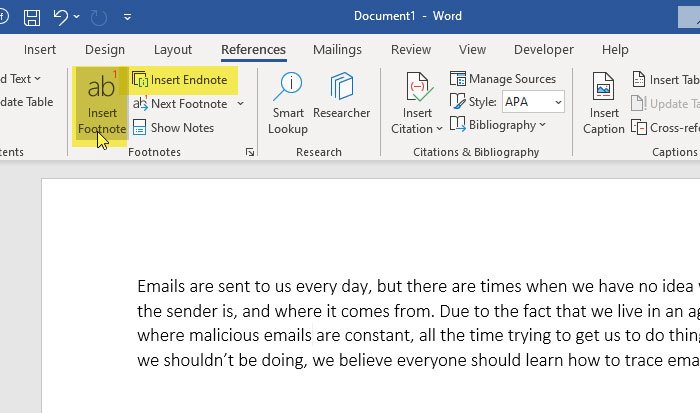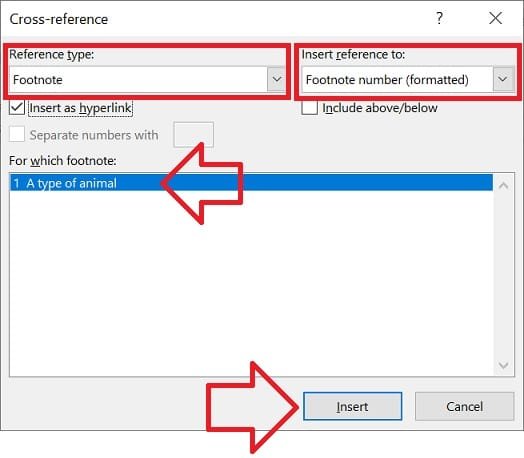
You can use footnotes and endnotes to add side comments to your work or to cite other publications like books, articles, or websites. Think of them like verbal asides, only in writing. What Are Footnotes and Endnotes?įootnotes and endnotes are both ways of adding extra bits of information to your writing outside of the main text. But don’t worry-the features and functions are the same. Depending on the version of Word you’re using, the menus we walk through in this guide may look a little different. Note: We’re using Microsoft Word 2016, but Word has supported footnotes and endnotes since at least Word 2007. Luckily, Word has useful tools for adding footnotes and endnotes to your writing. Maybe you want to make a side comment on one of your arguments, or you need to cite another author’s work without distracting from the main text.
#HOW TO MAKE A FOOTNOTE PROFESSIONAL#
Get your copy at the MS Press Store.Whether you use Microsoft Word for personal or professional writing, sometimes you may want to add supplemental notes to sections of your work.
/001-how-to-create-a-powerpoint-footnote-73d0c6f66e7545c4ab1b66ba069cb739.jpg)
Right-click the form and then click Save.Īnnouncements: New book: "Inside Microsoft Dynamics AX 2012 R3" now available. You can select a label or type the text that you want to appear. Specify the instruction you want to appear under the main instruction. In the property sheet, set values for the following properties: Right-click the group control, click New Control, and then click StaticText.Ĭlick the control. Type a unique name for the window control. To see a list of embedded resources, click Tools in the menu of the development workspace, and then click Embedded resources.įor example, use 928 to show a caution symbol with the footnote message. Specify the embedded resource you want to appear in the footnote area. In the property sheet, specify values for the following properties: Right-click the group control, click New Control, and then click Window.Ĭlick the window control. Type a unique name for the static text control.
#HOW TO MAKE A FOOTNOTE HOW TO#
To see an example of how to show or hide a group, see How to: Hide fields on a Dialog Form.
#HOW TO MAKE A FOOTNOTE CODE#
You can use code to hide or show the message in the footnote area. A group control is added to the form.Ĭlick the group control. Right-click the Footnote group control, click New Control, and then click Group. If you have to move the control, click the control and then press ALT+UP ARROW or ALT+DOWN ARROW.Ĭlick the Footnote group control. The group control must be the last control in the group. If you want to add a Footnote group, click the DialogCommit group, click New Control, and then click Group. You should see a group control named Footnote. The Design node should include a group control named DialogCommit.Įxpand the DialogCommit group control.

Expand the form, expand Designs, and then expand Design. In the AOT, expand Forms and find the form you want to work with. For information about how to create a dialog form, see How to: Create a Dialog Form.

To add a message to the footnote area, you must first create the dialog or drop dialog form. However, a footnote message is optional and you can decide to leave the footnote area empty. You use the footnote area to show a message that provides information about how to complete or use the form. The footnote area is the section of the form under the commit and cancel buttons. You can add an image and text message to the footnote area of a dialog or drop dialog form.

Applies To: Microsoft Dynamics AX 2012 R3, Microsoft Dynamics AX 2012 R2, Microsoft Dynamics AX 2012 Feature Pack, Microsoft Dynamics AX 2012


 0 kommentar(er)
0 kommentar(er)
